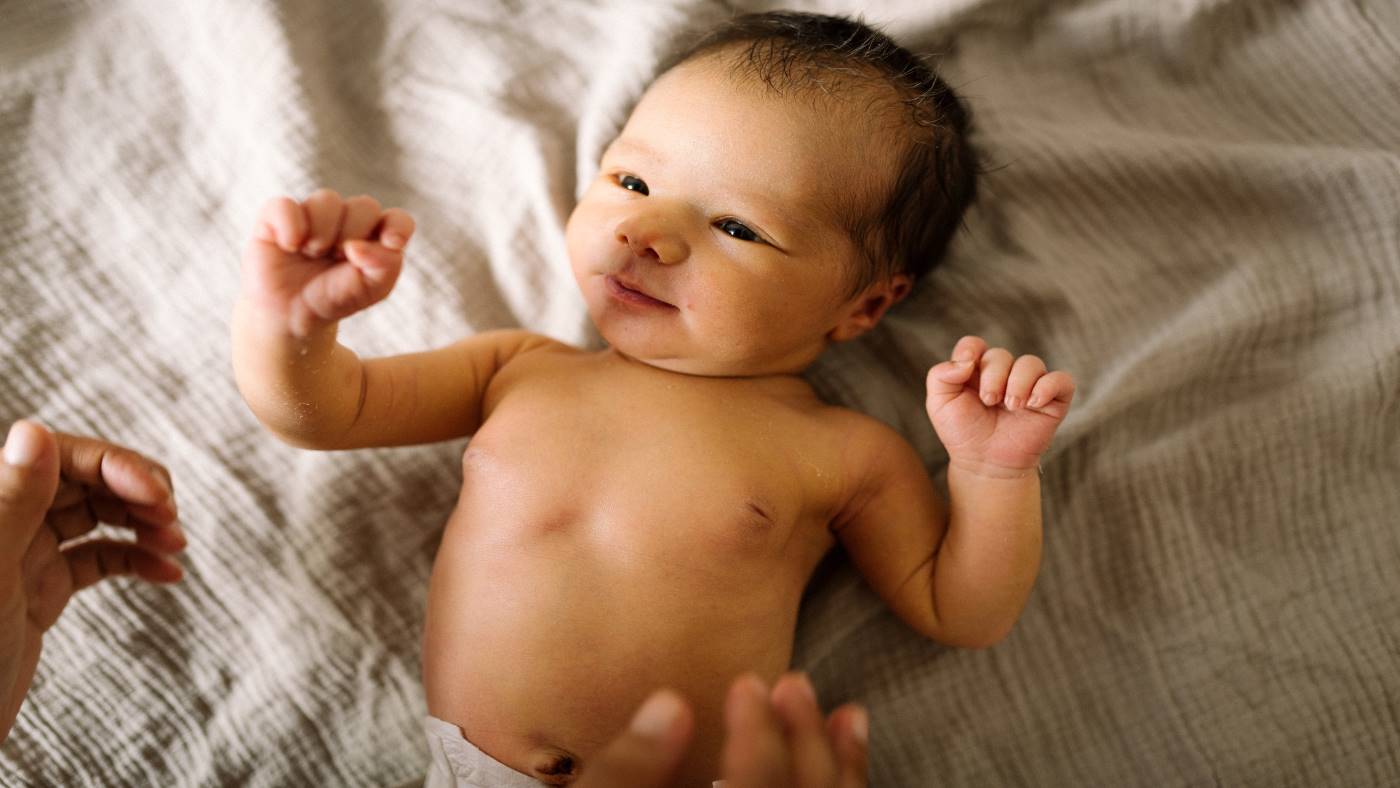Gentle light and your baby's vision

Your baby’s visual system began to develop before birth and they will have been able to respond to light when in the womb. However, there is little visual stimulation before birth, so your baby’s vision when they are born is quite poor. They will be drawn to colours and patterns with high contrast and be interested in faces.[1] Your baby will blink when there is a bright light and will turn their head and eyes towards a diffused light source, such as light coming through a curtain.[2]
Your baby’s vision is blurry at first and the development of their vision comes from experience.[3] Your baby will seek out visual stimulation when they are awake and alert – often this will involve looking at you, but they might also notice movement and light.
Your baby's initial response to light and contrast
Your baby’s eyes are still developing and they might be sensitive to bright light and close their eyes or move their eyes away if a light is too bright. But they will be interested in, and look towards, diffused light, such as the light coming through the curtains or the leaves of a tree.
It is thought babies respond to the contrast between the level of light on either side of them, turning when the diffused light to one side of them is brighter than the illumination on the other side.[4]
Your baby’s response to light shows not only that their eyes are recognising light, but also that their brain can process this signal and respond. Your baby is likely to only respond when they are calm and comfortable, so you probably won't see them turning when they are hungry, distracted or tired.
How this will develop in the months to come
Your baby’s brain will develop in order to process the signals that they receive from their eyes. In the next few months, they will be able to use their eyes together in order to judge distances and they will then be able to reach more accurately for objects. As their physical skills develop and they are able to move, they will begin to understand that the same object looks different from different angles.[3]
The development of your baby’s vision supports development in all streams as they bring together information from what they see, their movement, what they hear and feel to understand the world.
References:
[1] Byrne, E (2021) How to build a human. What science knows about childhood. London: Souvenir Press.
[2] Sheridan, M., Sharma, A and Cockerill, H. (2014). Mary Sheridan’s from birth to five years. Children’s developmental progress. (4th edn.). Abingdon: Routledge.
[3] Addyman, C (2020) The laughing baby: The extraordinary science behind what makes babies happy. London: Unbound.
[4] Goldie, L and Hopkins I.J (1964) Head turning towards diffuse light in the neurological examination of newborn infants.Brain. 87: 665-672. [Online] Available at: download (psu.edu). Accessed on 11th October 2021.